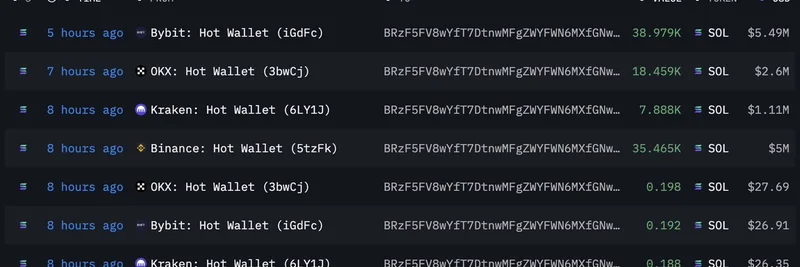Jack Mallers, the CEO of Strike and a prominent voice in the Bitcoin space, recently dropped a thought-provoking tweet that's got the crypto community buzzing. In a video
- The video features Jack Mallers speaking, with visual clips illustrating concepts like inflation and money printing, including references to events and figures such as Trump and protests.
-accompanied post, he flips the script on market crashes, arguing that the real problem isn't with assets like Bitcoin, but with the currencies we use to value them.
The core message? "Understand: the crash isn’t in assets, it’s in the currency." Mallers points out that inflation is the default way currencies lose value over time. Bitcoin, with its fixed supply of 21 million coins, stands out because it doesn't play by those rules – it honestly reflects the devaluation happening in fiat money like the US dollar.
Breaking Down Fiscal Dominance
To unpack this, let's talk about fiscal dominance. This is an economic term where government spending gets so out of control that the central bank, like the Federal Reserve, has no choice but to print more money to cover the bills. It's like maxing out a credit card and then just printing your own cash to pay it off – sounds unsustainable, right? In this scenario, holding something like Bitcoin becomes a way to "short" the system, betting against the endless money printing.
Mallers' advice is straightforward: "Buy the dips because it's the money that's failing." When Bitcoin's price drops in dollar terms, it might actually be the dollar weakening, making BTC a bargain in the long run.
The Video That Brings It Home
Accompanying the tweet is a video clip where Mallers visually drives the point home with dramatic edits. It features scenes of money printing presses, downward-trending charts, and even political figures, emphasizing how inflation erodes purchasing power slowly but surely. While the video doesn't have embedded subtitles, the imagery speaks volumes – think "they're coming for your wealth via inflation" overlaid on chaotic scenes.
If you're curious, check out the original tweet here to watch it yourself.
Community Reactions and Broader Implications
The tweet sparked a range of responses. Some users, like @TheBTCTherapist, echoed the sentiment with "THE PRINTER IS WARMING UP," highlighting concerns over more quantitative easing. Others questioned Bitcoin's performance compared to assets like gold or XRP, which have seen gains amid currency weakness.
One reply even brought up the ongoing speculation about Satoshi Nakamoto's identity potentially tying back to controversial figures – a reminder that Bitcoin's origins still fuel debates. But as Mallers implies, the protocol's strength lies in its decentralization and scarcity, regardless of who started it.
For those in the meme token world, this perspective is a wake-up call. Meme coins often ride the waves of broader crypto sentiment, and if Bitcoin's dips are really fiat's failures, then volatile meme projects could see even wilder swings. Tokens built on narratives rather than fixed supplies might struggle more in inflationary environments, pushing creators toward more sustainable models.
Why This Matters for Blockchain Practitioners
In a time when governments worldwide grapple with debt, understanding these dynamics can give you an edge. Bitcoin isn't just digital gold; it's a hedge against the very system that's printing money into oblivion. If you're building or investing in blockchain tech, keep an eye on macroeconomic signals – they could dictate the next big move in crypto.
Mallers' take reinforces a key principle: in crypto, volatility isn't always a bug; sometimes, it's a feature revealing deeper truths about our financial world. So next time the market dips, ask yourself – is it the asset crashing, or the yardstick breaking?



